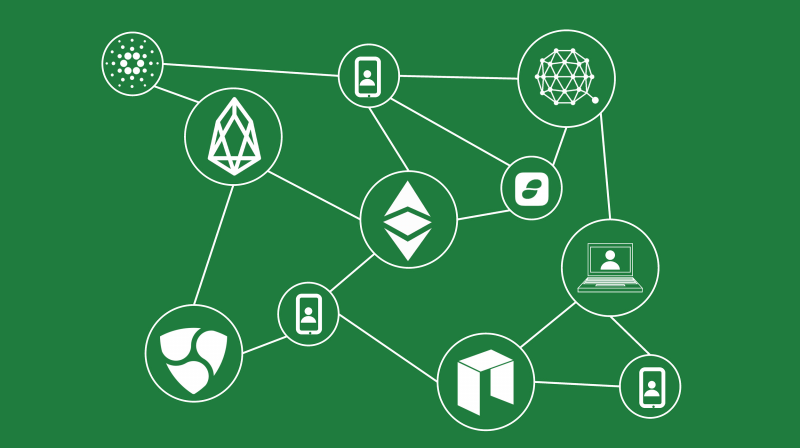Decentralized applications, or dApps, have become an essential part of the cryptocurrency space. To understand how some cryptocurrencies work, you need to understand what “Decentralized Apps” are. We will take a look at what they are and how they function.
What are decentralized apps (dApps)?
To put in simple terms, decentralized apps are similar to regular web apps. However, dApps connects the users and providers directly. Decentralized applications are published on a blockchain, which ensures that there is no central authority controlling the applications itself.
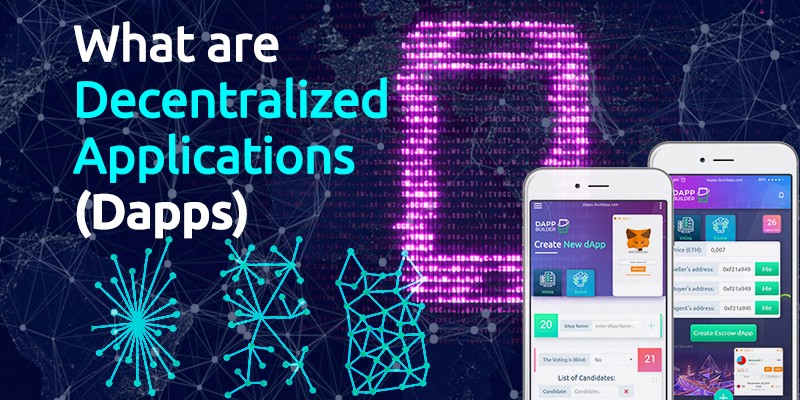
Since no single entity owns a decentralized app, the revenue generated from the apps is shared amongst the network participants such as the users, stakeholders, and nodes. There is no authority involved when it comes to blockchain. Any changes to how a dApp works have to go through a democratic approval process. In general, dApps are like usual apps but are hosted on blockchains and are decentralized in nature.
Criteria for a dApp
An application has to fulfil 4 criteria before it can be considered a decentralized app.
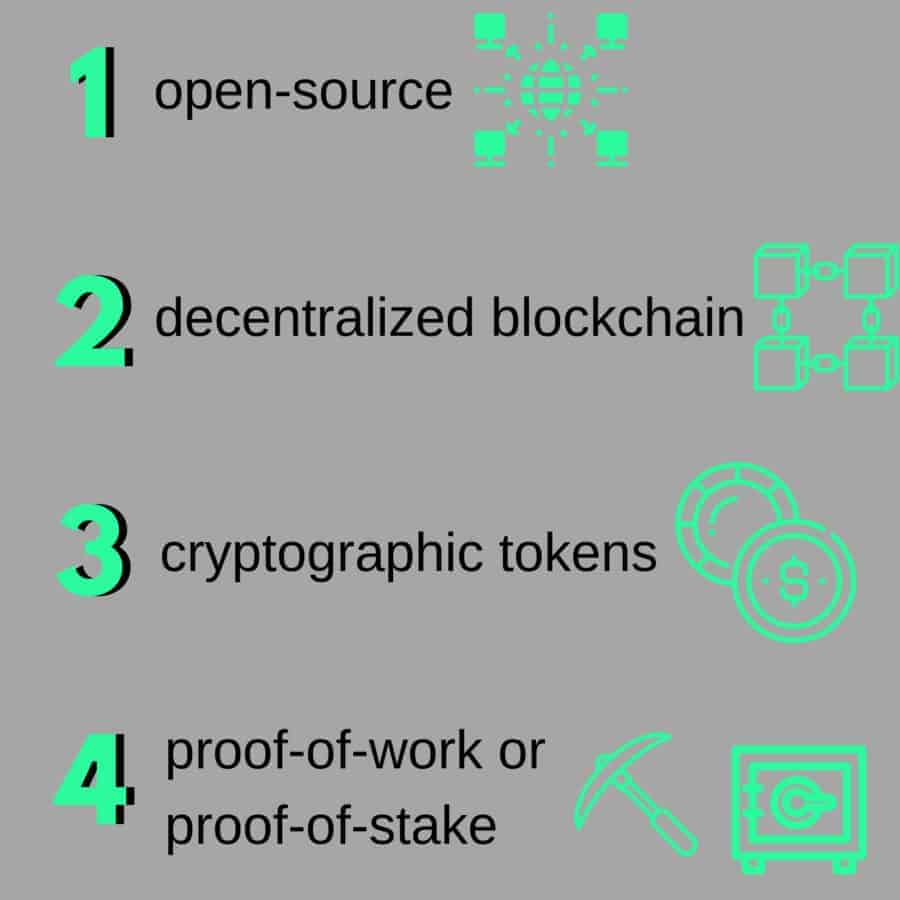
- Decentralized: it has to use a cryptographic technology like blockchain
- Open source: the source code for the app has to be available to everyone
- Incentive: the app must have tokens or other digital assets that fuel activity
- Protocol: it must generate tokens and implement a consensus mechanism
How dApps work
Decentralized apps work by applying the four criteria listed above. During the developmental stage, the application has to be built on a blockchain or a cryptographic-like technology. The app has to be open source as this ensures that it is truly decentralized. Anyone can see and contribute to the app’s code.
The blockchain serves as the ledger where records and transactions on the app are recorded permanently. However, tokens or other digital assets are needed to add transactions to the ledger. The tokens are either pre-mined or mined using any of the available algorithms and protocols available in the crypto space.
How to develop a dApp
Blockchain is a revolutionizing technology that aims to put power in the hands of the people. Thus, it is not surprising that practically anyone can launch a decentralized app, once the right processes are followed.
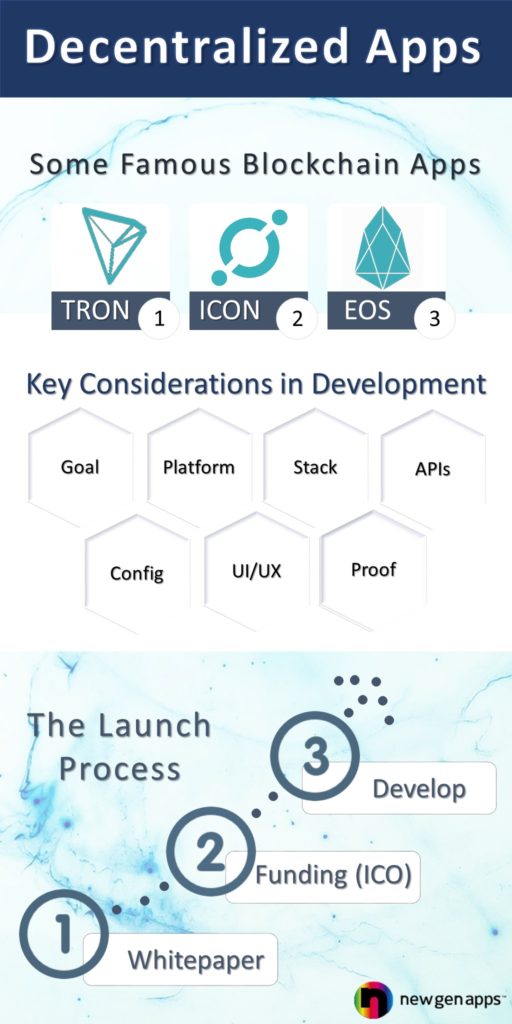
- Write and publish a whitepaper: The first step is to publish a whitepaper. The white paper contains an elaborate explanation of a project’s concepts, features, technical details, the important and function the dApp will achieve when launched. The whitepaper will also contain a roadmap, i.e., the steps to take to achieve the goal of the project.
- Launch an STO, ICO, or an IEO: Generally regarded as a token sale process, this step allows the developer to raise funds to achieve the project’s goals. The developer sells his tokens to the public to fund their project goals.
- Develop and launch the dApp: Once the funds have been acquired, the next step is to develop and launch the app. The more promising the app, the more recognition, and usage it would get in the market.
Notable dApp and dApp platforms
Some blockchain networks are created solely to support the growth of decentralized applications. The most popular one is Ethereum, the blockchain founded by Vitalik Buterin.
However, other platforms such as EOS, Tron, Tezos, Cardano, and a few others have sprung up to provide competition to Ethereum. Despite Ethereum being the first and most popular dApp, EOS and Tron are recording more daily transaction volume as they can handle more data compared to Ethereum.
According to a report by Dapp.com, Tron had the highest number of active users in the first quarter of the year, followed by EOS and Ethereum. It also recorded the most massive transaction volume in the first quarter of 2019.
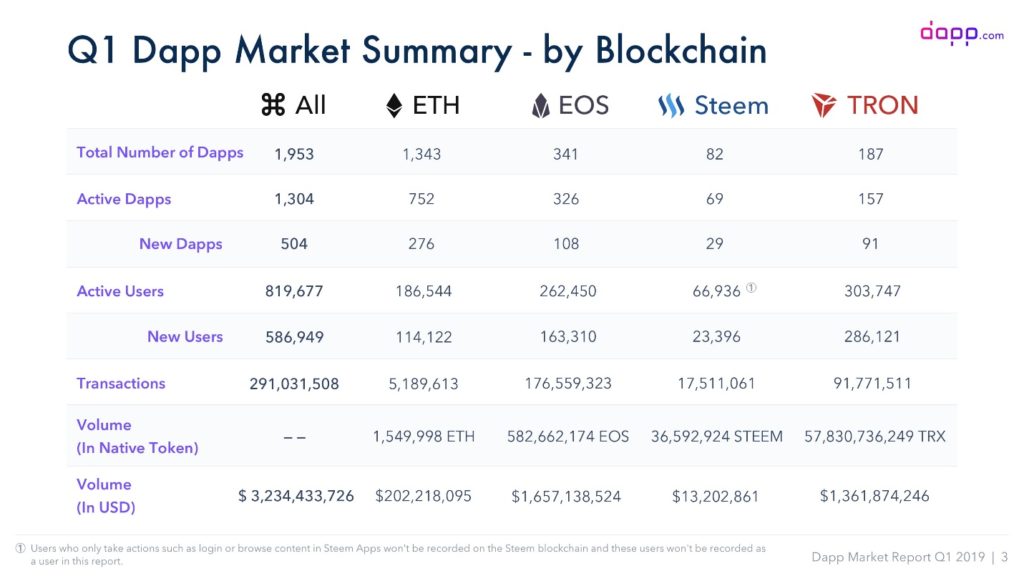
Over the past few years, some popular Dapps have gained popularity, the biggest one perhaps being CryptoKitties. The blockchain game is hosted on the Ethereum blockchain. Another popular one is Augur, the decentralized prediction platform.
Use of dApp in different sectors
Decentralized applications have gained usage in several sectors of the global economy. Here are a few successful dApps and their respective industries:
- Games: CryptoKitties, Etheremon, Decentraland, and Gods Unchained;
- Governance: Aragon, Wings DAO, Notar.io;
- E-commerce marketplaces: CanYa, OpenBazaar, and Soma;
- Science and Energy: Golem, Start Solar, and Green Ether Project;
- Crypto and finance platforms: ETHLend, Bisq, BitShares DEX, IDEX, ForkDelta, and Bancor Network.
Conclusion
Decentralized applications are a crucial part of the cryptocurrency and blockchain ecosystem. The apps have found use in several sectors of the global economy, and more could spring up as people continue to realize the revolutionary stance of blockchain. Tron has performed excellently over the past few months and will continue to provide fierce competition to the likes of Ethereum and EOS.
Sources:

Hassan is a cryptocurrency and stock market writer and enthusiast. The financial world has become his primary interest, with movies and books being some of his favourite pastime activities. He is an investor in many blockchain projects including Bitcoin, Stellar Lumens, Cardano, VeChain, Gifto, and Cindicator. Hassan also writes for important outlets like Blokt.com
